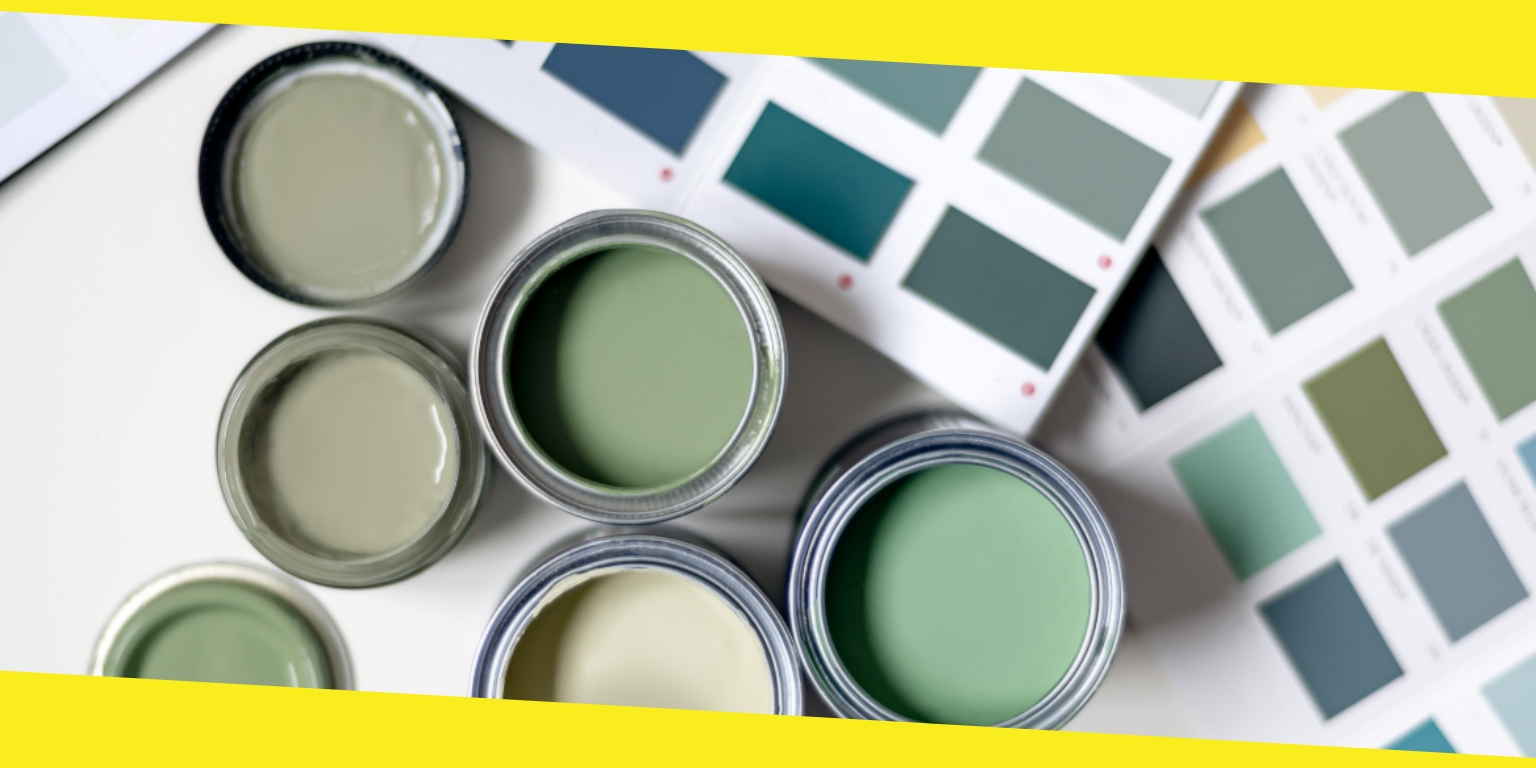Which Is Superior for House Painting: Acrylic or Latex?

It’s easy to feel confused in a hardware store’s paint section due to the numerous types and shades of paint to choose from. Latex and acrylic paint are the two most common types, and each has its unique set of components, such as the binder, pigment, solvent, and additives.
The pigment is what causes the color, while the binder is what keeps everything in place. The paint’s additive can impart desirable properties, such as accelerated drying time or resistance to high temperatures, while the solvent is responsible for spreading the paint. Since latex and acrylic paints all employ somewhat different components, one type may be more suitable than the others for your project. Find out which of these types of paint is best for your needs.
Contents
ToggleWhat Is Acrylic Paint
Acrylic paint’s chemical foundation includes a pigment and an acrylic polymer solution or acrylic resin. Due to its chemical composition, acrylic paint releases a relatively low level of volatile organic compounds (VOCs). This type of paint is more durable because it expands and contracts as it dries, making it ideal for areas where temperatures frequently rise and fall. Additionally, it retains its luster when subjected to sunlight, making it an excellent option for painting the exterior walls of your house.
What Is Latex Paint
Latex paint is water-based, meaning it uses water to bind the pigments. This variety of paint is easily accessible and represents the market’s dominant segment. Because of its low cost, latex paint is often the best choice when painting an expansive area.
Furthermore, as a water-based paint, latex produces low amounts of VOCs that other paints and construction materials can significantly emit. Consequently, making it an eco-friendly choice and safe for use in homes with pets and young children.
What Are the Key Differences Between Acrylic and Latex Paints
Adhesion
According to professional Sarasota painters, acrylic’s adhesive properties are superior compared to latex. When adequately primed, acrylic paints have excellent adhesion to many substrates, including wood, masonry, metal, and even some plastics. Latex paint is typically used on wood and drywall only.
Weather Resistance
Since it holds up better to the elements than latex, acrylic is often used as an external coating. Similarly to how latex and acrylic can expand and shrink in response to temperature changes, both materials are elastic. Therefore, they are significantly more durable than oil-based paint in terms of resistance to cracking and peeling.
Acrylic, being more malleable, outperforms latex in its resistance to rain and snow.
Durability
Although both acrylic and latex have good durability, acrylic is more durable. Besides being more weatherproof, acrylic paint is more resistant to wear and tear. This is why acrylic paints are utilized for interior and external flooring, doors, and stairwells that receive a lot of foot activity.
Ease of Use
The application of latex paint is simple. When appropriately applied, latex provides excellent coverage. There is no need to rush the painting process because the paint takes a long time to dry.
In contrast, acrylic paint dries in a short amount of time. Due to the incompatibility of the paint’s drying and mixing processes, this can be difficult to do on larger projects. So, if you’re planning on employing acrylic for a large-scale outdoor project, you’ll need to work quickly.
Cost
Acrylic paint is much more costly. The price of 100% acrylic paint is typically double that of latex. It can also be trickier to track down, necessitating trips to specialized paint shops that most experts patronize. Most acrylic paints are either high-end or contractor-grade, while latex paints come in a broader range of quality.
Benefits of Applying Acrylic Paint
- Due to its chemical composition, acrylic paint is more flexible. As a result, less chipping and cracking will occur. It’s perfect for exterior painting projects.
- Acrylic paints are more expensive but longer lasting.
- Acrylic paints are great for outdoor use since they are resistant to fading from the sun. Compared to oil-based paints, they are light years ahead of the competition.
- Acrylic paint is resistant to cleaners. You can safely wipe down painted surfaces.
Benefits of Applying Latex Paint
- Latex paint is more user-friendly since it dries quickly and leaves a smooth finish.
- Latex paint is more affordable than acrylic.
- Cleaning up after using latex paint requires nothing more than soap and water.
- Latex paint has significantly lower volatile organic compound (VOC) emissions than oil-based paints, making it a much safer option.
- Latex is commonly available. You can find the desired hue in stores and on the Internet. This makes it even simpler to combine colors.
Key Takeaway
Many homeowners spend a lot of time thinking about what colors to use on their homes, but that’s only some of what matters when selecting interior or exterior paints. Paints can be manufactured from various materials, each with its own benefits and drawbacks. Think of this guide as a resource to help you decide how to proceed with your house painting project.
Recommended For You
How to Blend Bauhaus Architectural Purity and Wall Décor
Most Inside
Most Inside offers high-quality recommendations and valuable updates to enhance all aspects of your life, providing premium guidance and enriching experiences.




